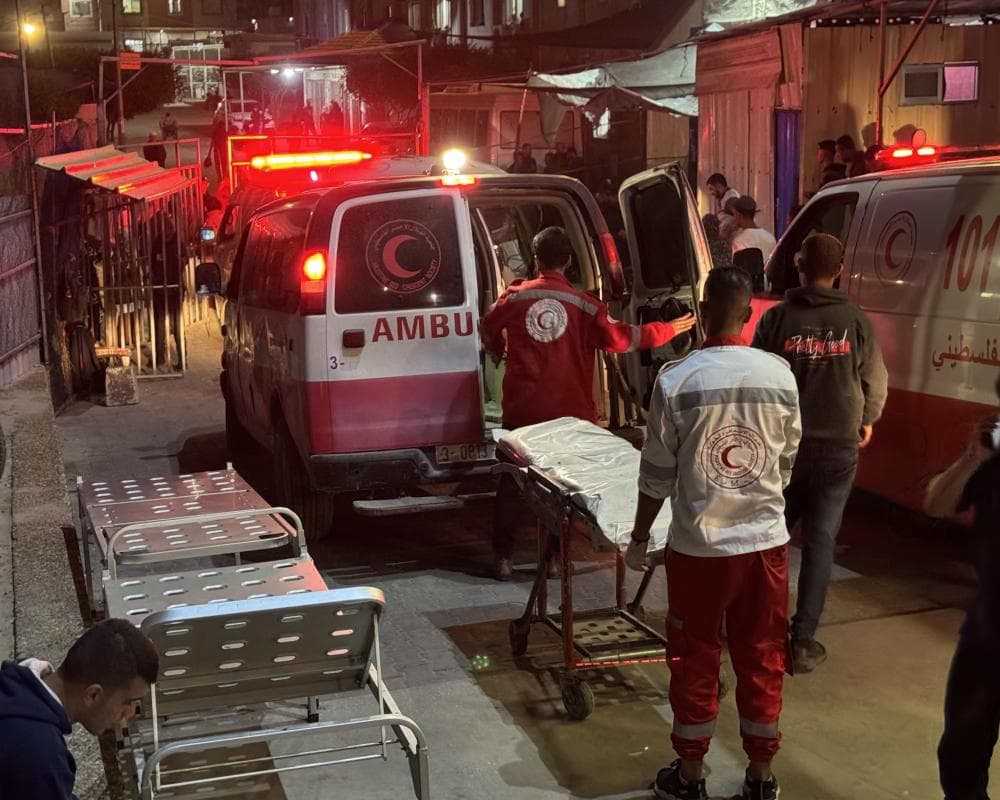Loading...
Please wait for a bit
Please wait for a bit

Click any word to translate
Original article by Jason Burke in Jerusalem
Hospitals in Gaza are running out of essential supplies, with new waves of Israeli airstrikes killing more than 50 people and injuring more than 100 in recent days, medical and aid workers in the devastated Palestinian territory have said.
Medics told the Guardian on Sunday that stocks of gauze, antiseptics, thermometers and antibiotics were running low.
Mohammed Saqr, the director of nursing at Nasser hospital in Khan Younis, said: “We are still suffering a severe lack of most of our supplies and medicines. We have daily crises, and the same shortages and deficiencies in supplies, and we are still exhausted as we are still receiving lots of casualties.
“There isn’t much difference from the period before the ceasefire. Unfortunately, the bombing is still going on … We don’t feel there is a big change.”
Humanitarian organisations have sent hundreds of tonnes of supplies into Gaza since the US-backed ceasefire came into effect last month but stocks of medicine and supplies remain insufficient.
Joe Belliveau, the executive director of MedGlobal, a US-based NGO, speaking from al-Mawasi, in southern Gaza, said: “There are staff shortages, not enough ambulances … The whole health system is still on its knees, with critical shortages across the board.”
Gaza’s health ministry has reported more than 300 deaths in Israeli strikes since the ceasefire, and medics say huge numbers of people are suffering the consequences of malnutrition, adverse weather conditions, a lack of shelter and new outbreaks of disease.
The first stage of the ceasefire agreement, which led to a part withdrawal by Israel from about half of Gaza and the return of all living hostages held by Hamas, is now close to completion.
The next stage, which received a boost when the UN security council endorsed Donald Trump’s 20-point plan for Gaza on Monday, calls for the creation of a committee of Palestinian technocrats to run the territory under the ultimate authority of the US president, and the deployment of an international stabilisation force.
The continuing violence in Gaza has strained the ceasefire, though both sides say they are committed to the agreement.
The office of Benjamin Netanyahu, Israel’s prime minister, said five senior Hamas members were killed in Israeli strikes on Saturday, while health officials in Gaza reported at least 24 people killed and another 54 injured, including children.
Analysts said Israel appeared to be using any alleged violation of the ceasefire to continue its effort to degrade Hamas’s military capabilities through killing its leaders.
One of the Israeli strikes on Saturday targeted a vehicle, killing 11 people and injuring more than 20 in Gaza City’s Rimal neighbourhood, said Rami Mhanna, the managing director of al-Shifa hospital, where the casualties were taken.
A strike targeting a house near al-Awda hospital in central Gaza killed at least three people and injured 11, while another strike on a house in Deir al-Balah in central Gaza killed three people, including a woman, medical officials said.
“Suddenly, I heard a powerful explosion. I looked outside and saw smoke covering the entire area. I couldn’t see a thing. I covered my ears and started shouting to the others in the tent to run,” Khalil Abu Hatab in Deir al-Balah told the Associated Press.
“When I looked again, I realised the upper floor of my neighbour’s house was gone,” Abu Hatab said. “It’s a fragile ceasefire. This is not a life we can live. There’s no safe place.”
Many of the casualties were taken to Nasser hospital, the biggest of the 13 major health facilities that are still functioning in Gaza.
Saqr said: “In the last attack we received 12 dead; among them were four children and two women. And among 24 injuries, 18 were women and children. We feel we are still in the war and no big difference. The situation is very hard.”
The international medical NGO Médecins Sans Frontières said its teams working in mobile clinics in Gaza City and Khan Younis treated at least six patients, including a 15-year-old and a 71-year-old man, with injuries caused by Israeli airstrikes and bullets.
Israel’s military said it launched attacks after an “extreme violation” of the ceasefire involving an “armed terrorist” who crossed into an Israeli-held area and shot at troops in southern Gaza. It said no soldiers were hurt and that the alleged attacker had used a road on which humanitarian aid entered the territory.
In other statements, the military said soldiers killed 11 militants in the Rafah area and detained six others who tried to flee through a tunnel. It said its forces killed two others who crossed into Israeli-held areas in northern Gaza and advanced toward soldiers.
More food supplies are getting into Gaza since the October ceasefire but the amount is still falling short of the huge humanitarian needs as winter rains risk spoiling delivered foodstuffs, the UN World Food Programme said on Friday.
Belliveau said: “We have seen malnutrition stabilise and that has really improved. The World Health Organization have had modest success getting medicine and medical supplies in but [MedGlobal] have two lorry loads that are stuck since 10 October waiting for permission from Israel.”
Israel denies accusations it is deliberately obstructing aid, and accuses Hamas of stealing humanitarian assistance.
Cogat, the Israeli ministry of defence agency that administers entry to Gaza, said last week: “Aid is flowing … Hundreds of trucks daily carrying food, medical equipment and shelter supplies.”
The two-year war in Gaza was triggered when Hamas-led militants killed about 1,200 people, mostly civilians, and abducted 251 during a surprise attack into Israel in October 2023. The Islamist organisation is still holding the remains of three hostages.
More than 69,000 Palestinians, mostly civilians, were killed in the ensuing Israeli offensive and in strikes since the ceasefire. The bodies of thousands more remain under the rubble.